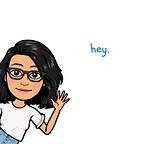TRAVEL + CULTURE
Four Emotions From Urdu Expressions That Get Lost in Translation
Because Urdu is more than just a language
“Listen:
my father speaks Urdu
language of dancing peacocks
rosewater fountains
even its curses are beautiful.”
— (Shailja Patel, Migritude)
No image could justify the emotion I wanted to convey while describing my mother tongue.
Maybe it’s the woman on the left that reminded me of all those days I spent in India and spoke Urdu, or the three abayah-clad women behind seated with their children that reminded me of Urdu.
Or it could have been the remnants of Agra Fort that unabashedly stood behind, reminding me of the Mughals who brought Urdu along with them to the Indian subcontinent.
Urdu is relatively a new language, and its linguistic influence started when the Muslims took over Sindh in 711. Urdu is a culmination of Farsi, Arabic, Hindi, Punjabi, Haryanvi, and English languages. The development of the speech was at its peak during the Mughal rule (1526–1858). Modern-day Urdu is spoken in Pakistan and several parts of India.
